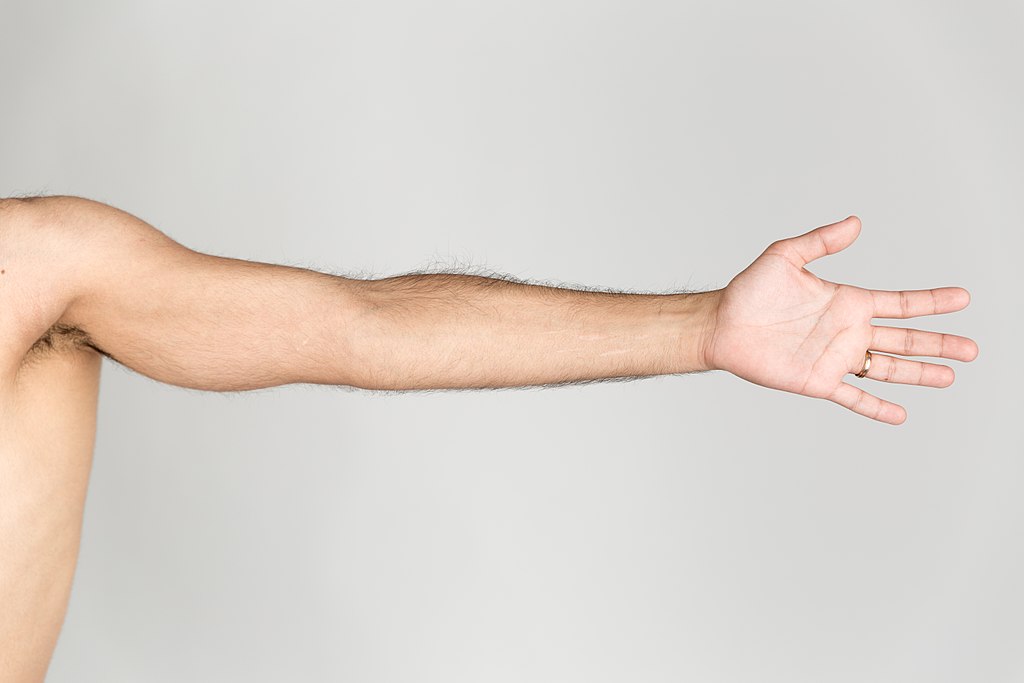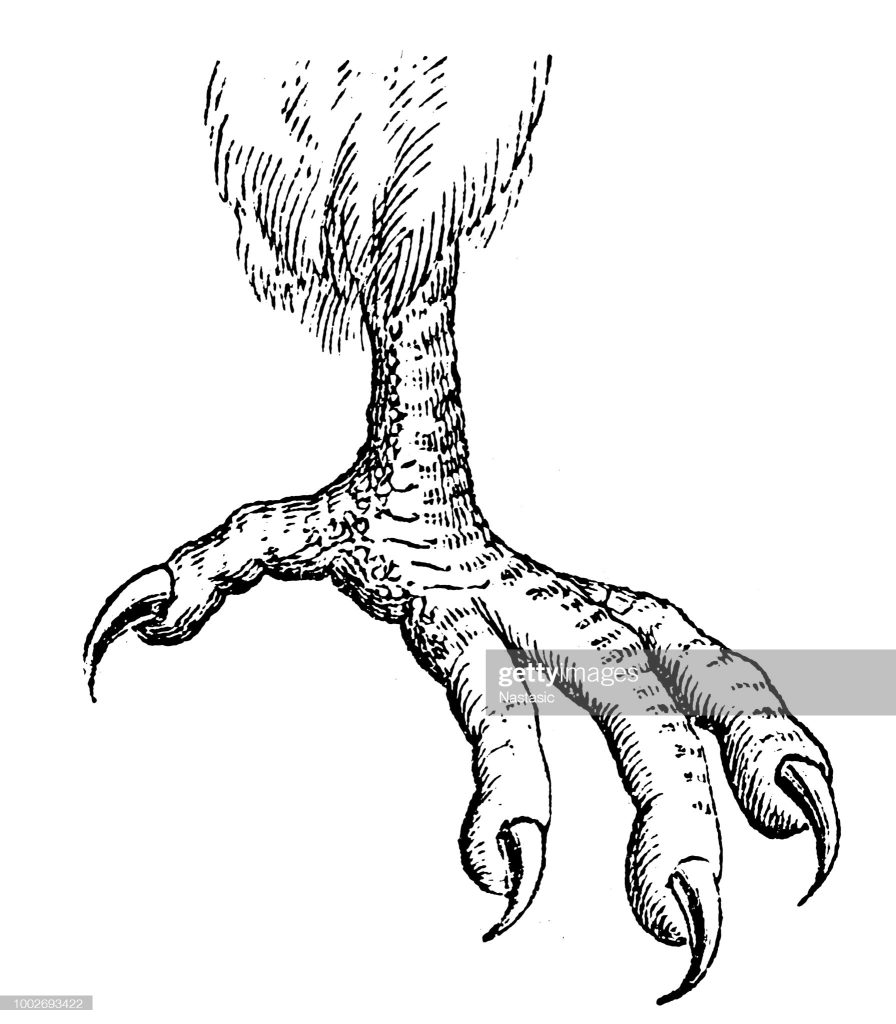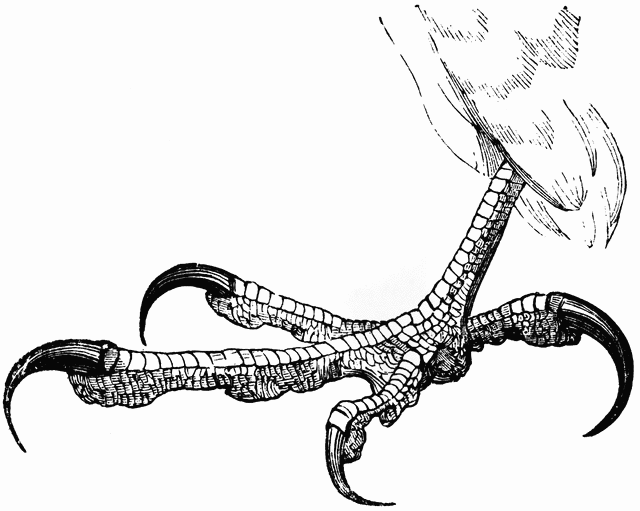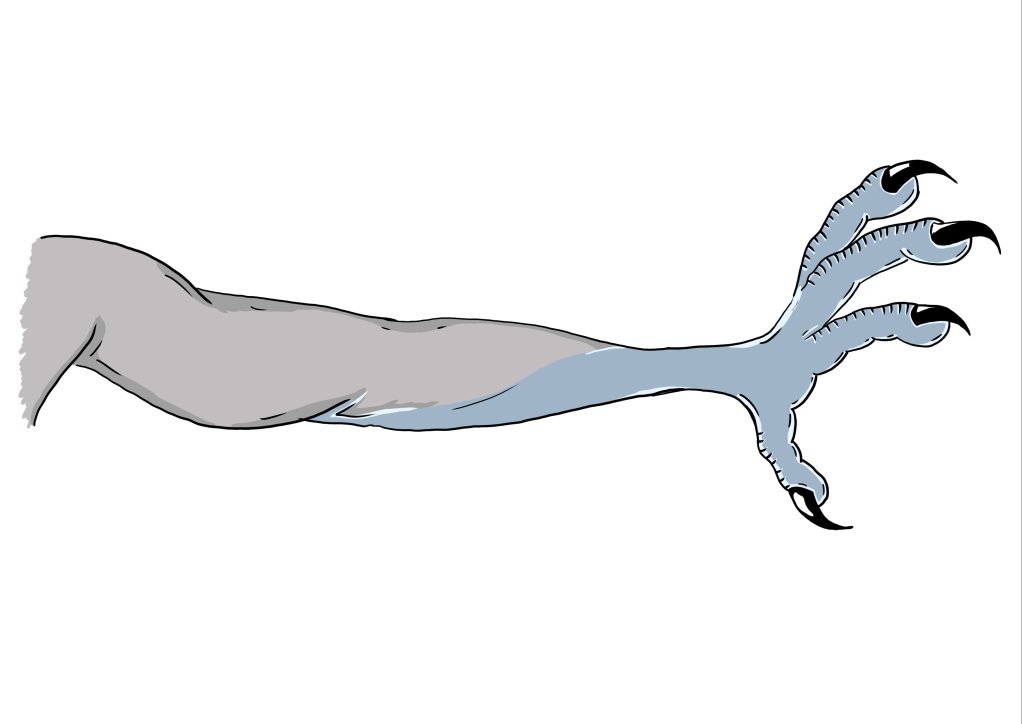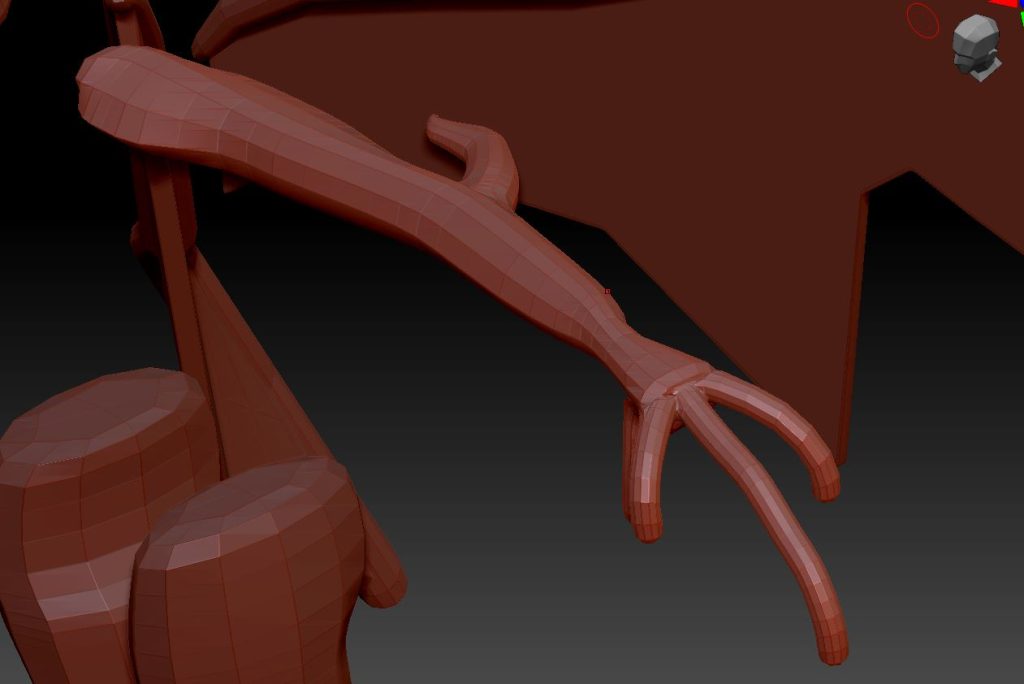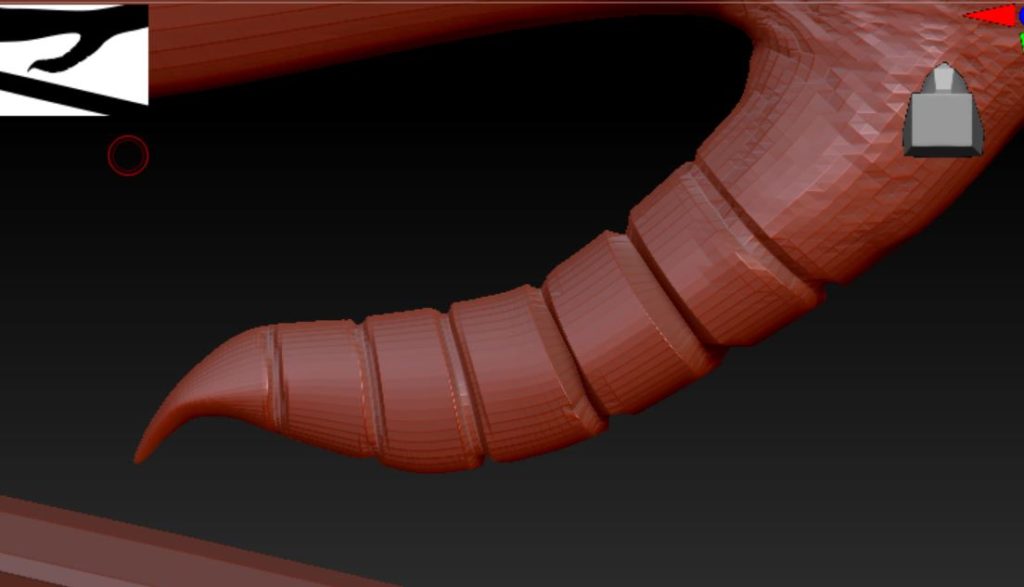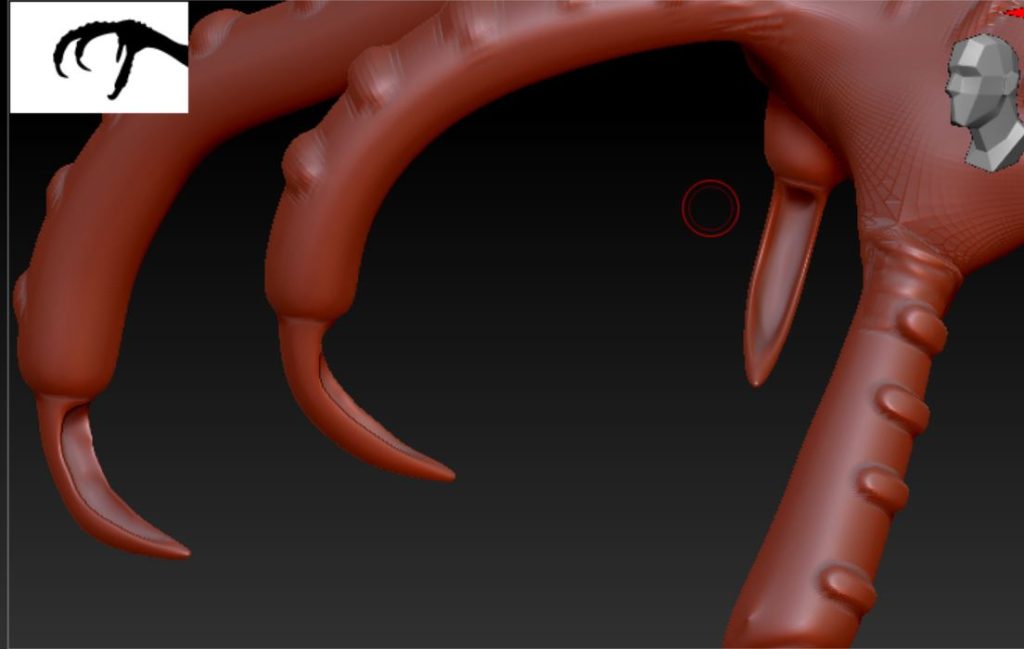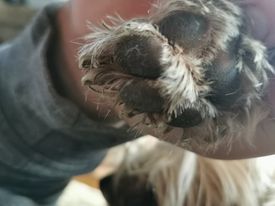The arms and legs of the character are going to share many characteristics, but I do think it important to differentiate them from each other where I can in order to avoid making my character seem like they should walk on all fours.
Just like with the legs I began by gathering references of the human arm (REF.1 + REF.2) and avian claws (REF.3 + REF.4). I liked the claw references I gathered here as they are notably different than the design I intend to create for the feet of the character, while sharing the same bulky design which will not make the claws seem tiny when paired with a character the size of a human woman.
Here you can see how I merged the claw and arm together. I used the same colour pallet as I did with the lags, though I have made the skin tone a little paler. Also worth note here is that the reference used for the arm proportions is that of a male arm, my idea regarding this is as follows. If I model the character as if she has a male arm and then stretch the arm so its disproportionally long, which is something I discussed doing in my initial response, then it will make the arm proportions feminine while also achieving the monstrously long arms I want.
:: Production ::
I began with the Maya block out I had made previously (Fig.1). Before selecting the left arm (Fig.2). It would have been useful to have been able to work on both the right and left arms simultaneously, however this was not possible with the method I used to model my character (one body part at a time). Also, given how I had made the hands slightly different in Maya before I imported them into ZBrush the Boolean gave different results and would need a more detailed edit anyway.
The Boolean gave me some bad geometry in Maya (Fig.3), which I knew would need to be fixed before I could start adding in any fine details. To solve this, I simply used the clay build-up brush, with a very fine alpha (alpha 13). Which let me build up the model around where the fingers met the palm (Fig.4)
It was a similar story with the elbow horns, Maya gave me some overlapping geometry (Fig.5) which needed to be fixed by building up the model where the two pieces had been joined (Fig.6). I ran into an Issue with the tip of the horn, as when I used the brush to build up one side of the point, it would pull the mesh on the other side as though I were using the move brush as opposed to the clay build-up brush (Fig.7). I tried to use a mask to cover one side, however the mask itself seemed to almost seep through the mesh and didn’t stop the mesh being damaged on one side to build the other.
I asked David for advice with this part, but in the meantime, I started adding details to the horn. I originally thought about adding in rings (Fig.8), However I thought this perhaps a little too ornate for a natural bone. Even the most ornate of deer antlers do not have any pattern in the antler itself, however leaving the area bare felt like I was missing something. I had a browse through the brushes and found one called ‘Rake’ which I thought gave a nice weathered effect while allowing the bone to look as though it could occur naturally (Fig.9)
I also ran into an issue with the hands of my character. They are designed to look like bird feet, which I did reasonably well by adding in grooves along the ridge of the fingers (Fig.10). However, when I came to the stage where I wanted to add the claws, I couldn’t find the best way to do this. I tried to use the move brush and pull out a claw shape from the tips of the fingers, but as the tips of the fingers are such a small part of the model they quickly distorted and the various remesher methods took away the grooves I had added before.
The only way I found to add claws was to use the premade body part brush, and found that the ear burhs actually made for fairly convincing claws (Fig.10). The problem was that the claws would only protrude in straight lines and couldn’t be as large as I would like without deforming either the rest of the finger or themselves through growing too large. I was also very aware that this would also be a problem when I started work on the feet later, so felt like it was worth going back into Maya (Fig.11) and adding the claws that way, with more control and then reimporting the model into ZBrush.
By reimporting my model, I did have to redo the work I had done on the arm and torso body parts previously, however now that the Maya model was almost complete it meant I pretty much just had to add a head and fix the topology of the booleaned body parts in ZBrush. Meaning that I could give the model large claws (Fig.12), just how I imagined them without the risk of deforming the fingers or exploring the more advanced aspects of ZBrush in the time limit I had.
It was much the same story with the other arm. I used the same methods as I did for the left, making sure to hollow out the nails as a finishing touch (Fig.14). With most of the small details to come when exported into substance painter later. It was important to hollow out the nails, as with real life animal nails, such as those of a dog the nails are hollow (Fig.15) and this was a detail I wanted to bring into my own design.
With the individual body parts modelled, my next step was to merge the different subtools into one. Which would be needed for exporting the character and animating the character next semester. You can find the next steps of my process in my ‘Full Body’ post.
:: References ::
Clipart (n.d.) [Online Image] Available online: http://www.clipartsuggest.com/falcon-claw-Zvfc6c-clipart/ [Accessed 25/10/2021]
Nastasic (n.d.) [Online Image] (GettyImages). Available online: https://www.gettyimages.co.uk/detail/illustration/falcon-foot-royalty-free-illustration/1002693422 [Accessed 22/10/2021]
Shutterstock (A) (n.d.) [Online Image] Available online: https://www.shutterstock.com/image-photo/man-hands-try-grab-something-isolated-451036789 [Accessed 22/10/2021]
Shutterstock (B) (n.d.) [Online Image] Available online: https://www.shutterstock.com/image-photo/attacking-talon-eagle-isolated-on-white-1290483082 [Accessed 22/10/2021]
Wikipedia (2021) [online image] Available online: https://en.wikipedia.org/wiki/Arm [Accessed 22/10/2021]
